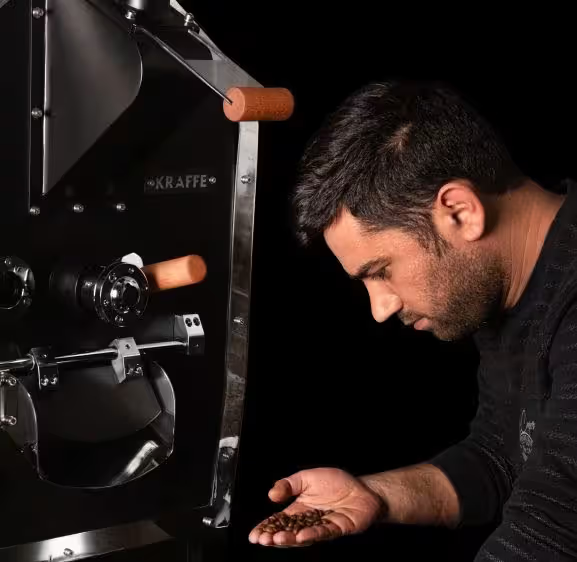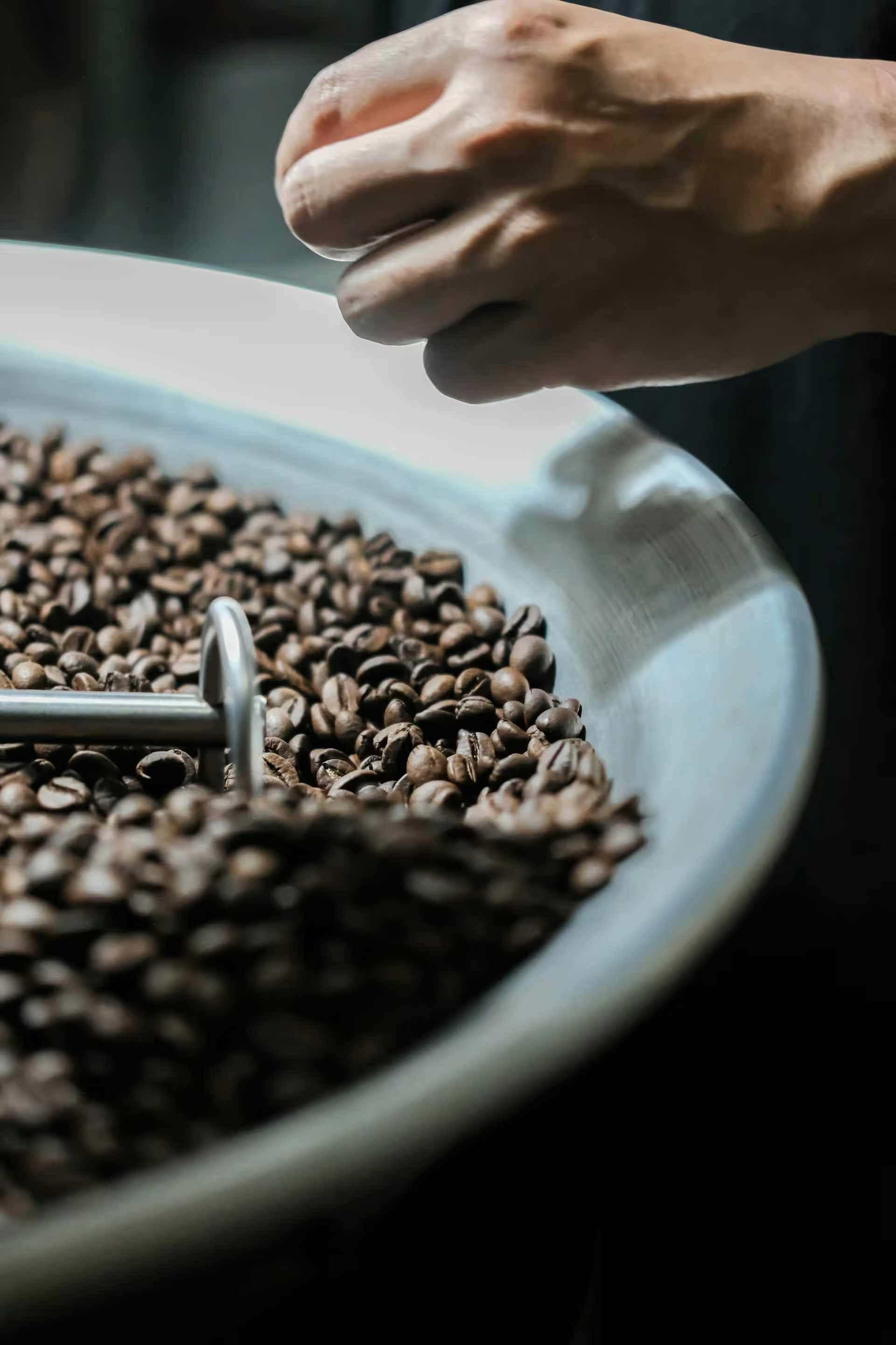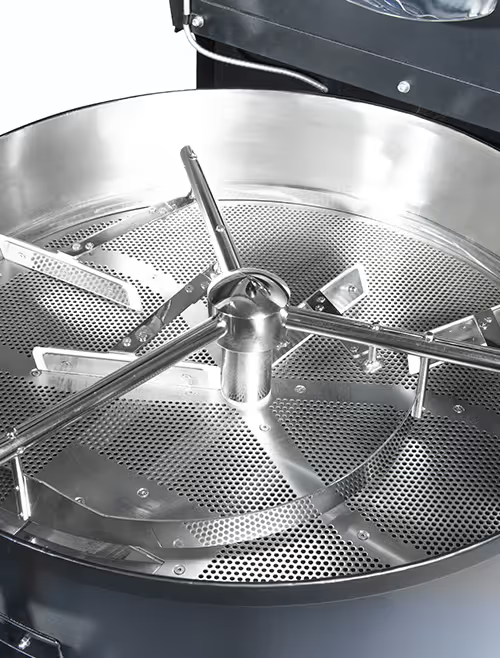Coffee roasting is a captivating process that involves transforming green coffee beans into the aromatic and flavorful delights we enjoy in our daily cup. Over time, various coffee roasting methods have emerged, each contributing to the diversity of flavors found in coffee. In this blog post, we will explore the characteristics and advantages of both traditional and modern coffee roasting methods, providing insights into the processes involved and the unique flavors they produce. Understanding these techniques is crucial for any aspiring roaster or coffee enthusiast looking to deepen their appreciation for quality coffee.
Traditional Coffee Roasting Methods
These methods have been passed down through generations and often carry a rich cultural heritage.
1. Drum Roasting
Drum roasting is a classic and widely adopted traditional method where coffee beans are roasted inside a rotating drum, typically positioned horizontally over a heat source. This constant rotation is key to ensuring an even distribution of heat, which leads to consistent roast results across the batch.
Process: Beans tumble within the drum, receiving heat through a combination of conduction (contact with the hot drum surface) and convection (hot air circulating within the drum).
Control: While more manual than some modern methods, skilled roasters can manipulate heat application and airflow to guide the beans through various roasting stages (drying, Maillard reaction, first crack, development, second crack).
Flavor Profile: Drum roasters are versatile and can produce a wide spectrum of flavors, from light and bright to rich and dark, depending on the roast duration and temperature curve. They are commonly used in both small artisan roasteries and large commercial operations.
Kraffe Roasters Connection: Many modern commercial roasters, including those from Kraffe, build upon the foundational principles of drum roasting, enhancing it with precision controls and advanced technology for superior consistency.
2. Open-Fire Roasting
Open-fire roasting is one of the oldest and most elemental methods, involving roasting coffee beans directly over an open flame, often using wood, charcoal, or other traditional fuels.
Process: Beans are typically held in a pan, mesh, or a simple rotating apparatus above the fire. The roaster must constantly agitate the beans to prevent scorching and achieve an even roast.
Control: This method offers the least amount of precise control and relies heavily on the roaster’s skill, experience, and sensory judgment. The type of fuel and the intensity of the fire significantly impact the final flavor.
Flavor Profile: Produces distinct, often smoky, and rustic flavors. The direct exposure to flame and combustion byproducts can impart unique characteristics not found in other methods. It’s deeply rooted in tradition and cultural practices in many coffee-growing regions.
3. Pan Roasting
Pan roasting is a small-batch, manual method where coffee beans are roasted in a shallow pan (like a wok or a skillet) over a heat source such as a stovetop or a small fire.
Process: This is a labor-intensive method requiring constant stirring or shaking of the pan to ensure the beans roast evenly and don’t burn.
Control: Similar to open-fire roasting, control is largely manual. The roaster adjusts heat and agitation based on visual cues, sounds (the cracks), and aroma.
Flavor Profile: Pan roasting can produce a wide range of roast levels, from light to dark. It provides an opportunity to infuse unique, often more caramelized, flavors into the beans due to the direct contact with the hot pan surface and the roaster’s ability to manage heat and duration intimately. It’s a common method for home roasting or very small-scale operations.
Modern Coffee Roasting Methods
Driven by the pursuit of precision, consistency, and the ability to highlight nuanced flavors, modern roasting methods often incorporate advanced technology.
1. Hot Air Roasting (Convection Roasting)
Hot air roasting, also known as convection roasting or fluidized-bed roasting (though there are distinctions), utilizes a powerful stream of heated air to roast the coffee beans.
Process: Beans are agitated or lofted by the hot air, ensuring that each bean is uniformly exposed to the heat. This leads to very even roasting.
Control: This method offers highly precise temperature control and even heat distribution. Roasters can program and replicate roast profiles with great accuracy.
Flavor Profile: Hot air roasting is known for its ability to preserve delicate and complex flavors, often resulting in coffees that are clean, bright, and nuanced. It’s excellent for highlighting the intrinsic qualities of high-grade specialty coffee beans.
Kraffe Roasters Insight: Kraffe machines, while primarily drum-based, incorporate sophisticated airflow control systems that leverage convection principles to ensure precise and even heat transfer, similar to the benefits seen in dedicated hot air roasters.
2. Fluid Bed Roasting
Often considered a subset or a specific type of hot air roasting, fluid bed roasting involves suspending coffee beans in a column of hot air, creating a “fluidized bed” effect where the beans behave like a liquid.
Process: The intense airflow keeps the beans in constant motion, leading to rapid and very uniform heat transfer.
Control: Offers excellent control over the roasting environment and allows for quick adjustments.
Flavor Profile: Typically produces beans with bright acidity and very distinct, clean flavors. The rapid roasting can preserve more of the volatile aromatic compounds. This method is highly favored in the specialty coffee segment for its consistency and ability to produce exceptionally clean cup profiles.
3. Infrared Roasting
Infrared roasting employs infrared radiation as the primary heat source to roast coffee beans.
Process: Infrared waves directly heat the beans from the inside out, which can be different from methods that heat the surface first.
Control: This method offers precise and targeted control over the heating process, allowing roasters to manipulate roasting parameters for specific flavor development. The energy transfer is efficient.
Flavor Profile: Infrared roasting can produce rich, full-bodied coffees with unique flavor characteristics. Proponents suggest it can enhance sweetness and body while reducing bitterness. It’s an innovative approach that allows for a high degree of manipulation of the roast profile.
Comparing and Contrasting
| Feature | Traditional Methods (e.g., Drum, Open-Fire) | Modern Methods (e.g., Hot Air, Infrared) |
|---|---|---|
| Flavor Development | Often influenced by the roasting apparatus, fuel type, and cultural practices. Can be complex, smoky, or very full-bodied. | More control to highlight specific tasting notes, often cleaner, brighter, and more nuanced. Preserves delicate aromatics. |
| Consistency | Relies more on roaster skill and experience. Can be challenging to replicate precisely. | Greater precision and repeatability due to advanced temperature and airflow control. Software integration aids consistency. |
| Control | More manual, sensory-driven adjustments. | Highly precise, often automated or programmable controls for temperature, time, and airflow. |
| Heat Transfer | Primarily conduction and some convection. | Primarily convection (Hot Air) or radiation (Infrared). |
| Flexibility | Well-established profiles, some limitations in fine-tuning. | Greater opportunities for experimentation, innovation, and exploring new flavor profiles. |
| Batch Size | Varies from very small (pan) to large commercial (drum). | Varies, with some methods excelling at small, precise batches (specialty) and others scalable for larger volumes. |
Conclusion: The Art and Science of Roasting
Both traditional and modern coffee roasting methods possess unique characteristics and offer distinct advantages. Traditional methods are deeply embedded in coffee’s rich history and cultural practices, often yielding robust and characterful brews. Modern methods, on the other hand, provide roasters with unparalleled control, consistency, and avenues for innovation, allowing for the meticulous crafting of specific flavor profiles demanded by today’s discerning coffee lovers.
The choice of roasting method ultimately depends on the desired flavor outcome, the roaster’s expertise and philosophy, and the specific goals of the coffee roasting process. Whether it’s the rustic charm of an open-fire roast or the clean precision of a hot air-roasted specialty bean, understanding the nuances of each method allows coffee enthusiasts and professionals alike to appreciate the artistry and craft that goes into every cup.
At Kraffe Roasters, we value the heritage of traditional methods while embracing the precision of modern technology. Our machines are designed to give you the control to explore the full spectrum of coffee flavors. Stay tuned to our blog for more insights into coffee processing, roasting techniques, and how to choose the right commercial coffee roasting machine for your needs.


